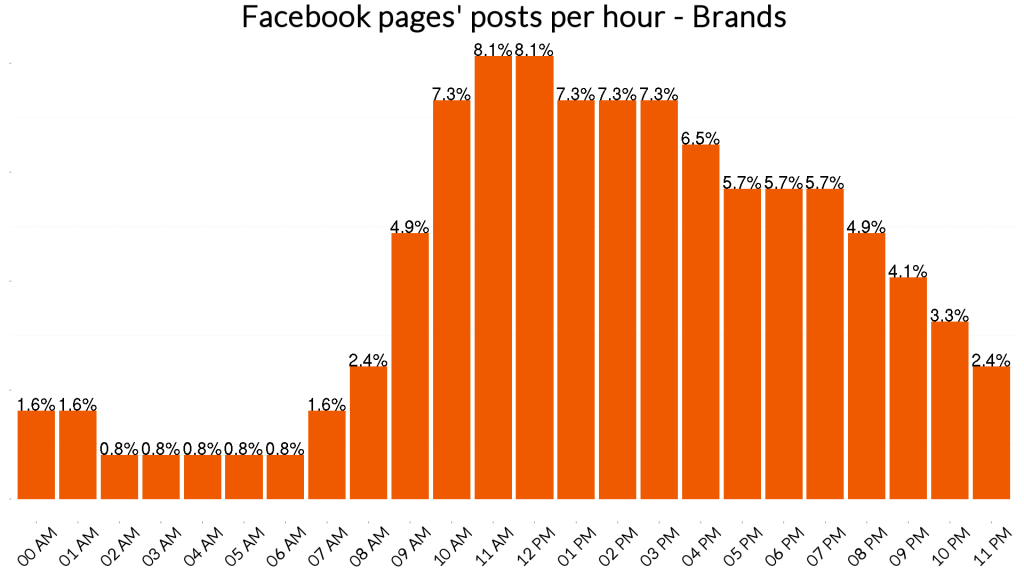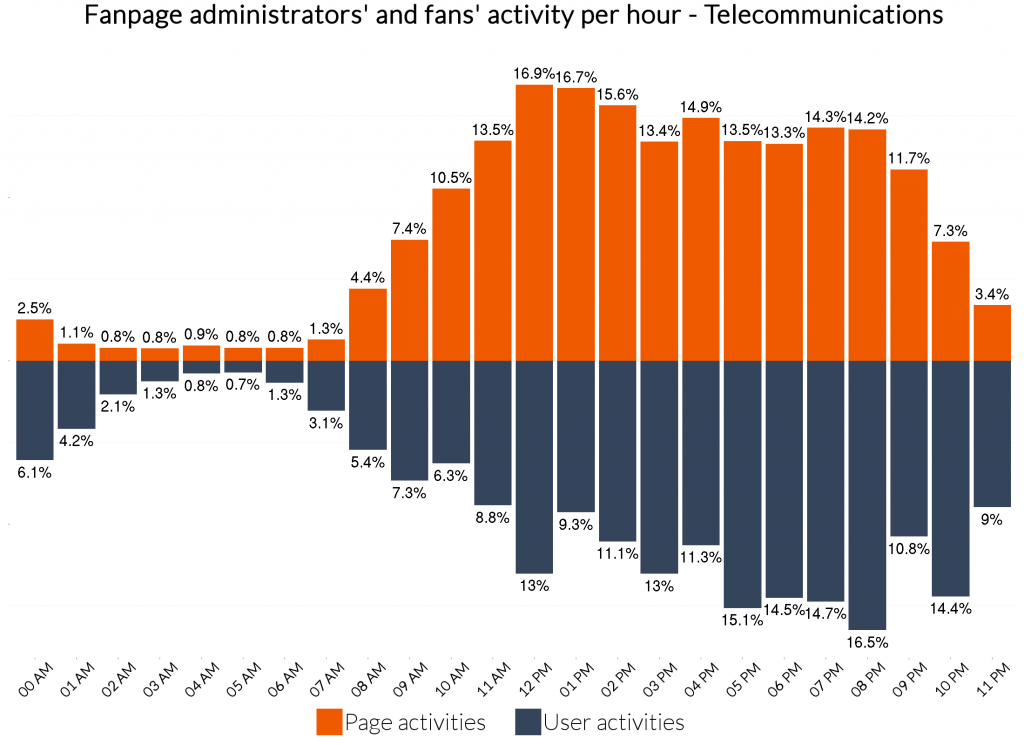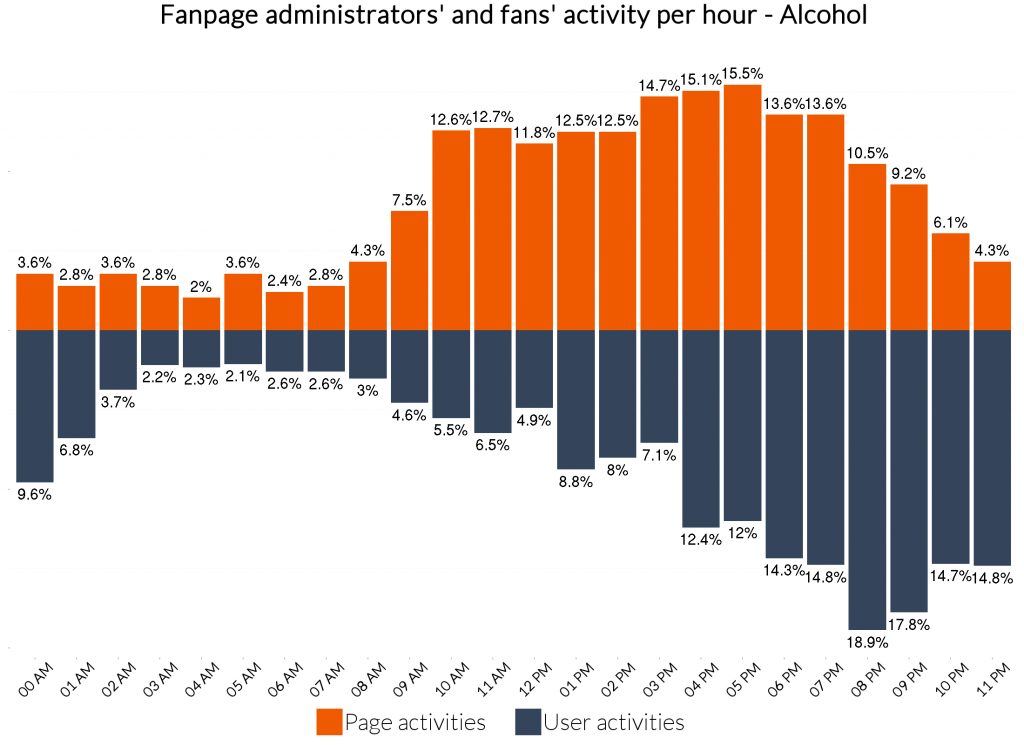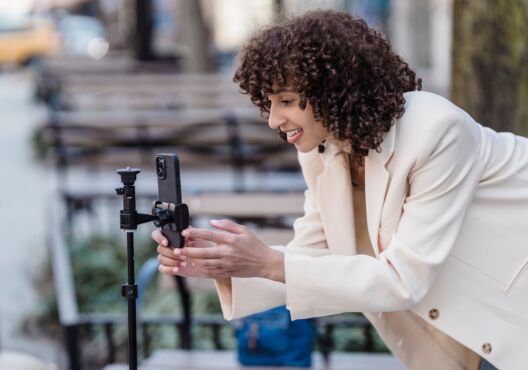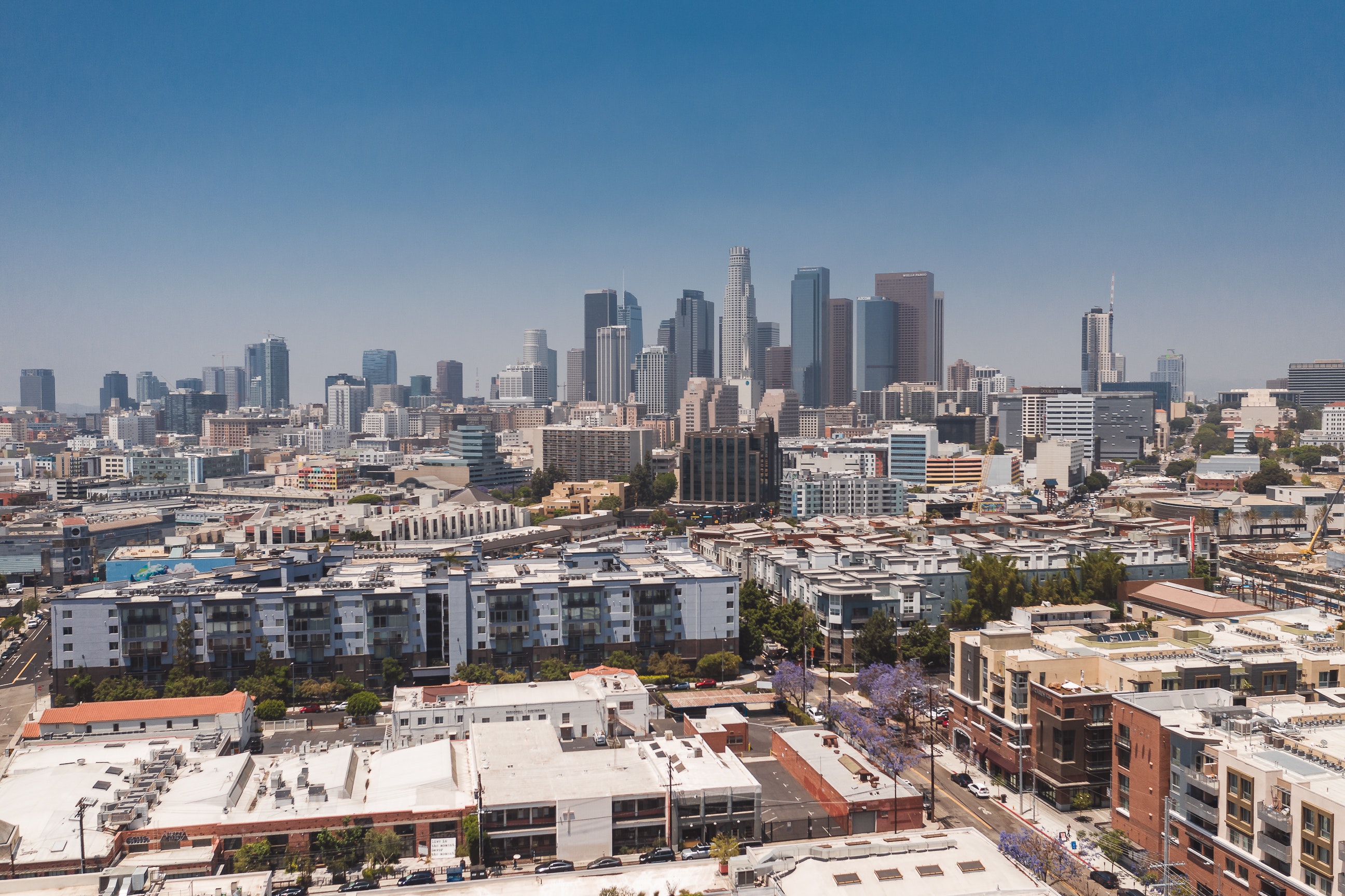Many administrators of commercial Facebook pages are looking for the best time to publish content as if it were some kind of Holy Grail. But there is no universally ideal posting time. It will always depend on your goals, your business model, and on the people you want to reach. And – what’s more important – you probably won’t find out what is your best posting time, unless you start analyzing your page and your competitor’s’ pages yourself.
Based on the Sotrender 50TB database of social media communication data, we analyzed the publishing habits of almost 10 000 Facebook pages and more than 500 000 posts from different categories and countries to show you why timing is so important and how to figure out your own posting schedule.
The best posting time – follow others advice or trust yourself?
Posting hour can have a great impact on how your content engages users. As we wrote recently and also some time ago, engagement is one of the main page performance indicators. So it’s not surprising that page administrators look for tips about the ideal publishing time. Many professional bloggers are eager to provide a solution for them, for example:
- According to Neil Adams, fanpage content should be published around 1-4 PM,
- Catriona Pollard suggested that posting between 9 AM and 7 PM works best (seems like a quite a long timeframe, right?),
- According to Neil Patel’s infographic there are even special hours to gain more shares (1 PM) and clicks (3 PM).
As we can see, following such advice can be a little bit confusing, because there’s an agreement on only one simple rule – page admins should be active when their fans are awake and this is most likely during the day. But are they really only active then?
Although it seems that we can find some generally “appropriate” posting time, the solution – as almost always in social media – is not that simple. Matt Kapko and Hubspot’s Ginny Soskey point out that scheduling posts should be a constant experiment. And that’s probably the best approach. Why? Let us show you.
The most popular posting hours
At the very beginning, we checked at which hours Facebook page administrators most often published new content during the last 6 months.
But as we can see on the chart above, showing the average percentage of posts published by fanpages from Brands category per hour, administrators of these Facebook pages focus their work more or less around regular “working hours”. They start publishing content from 7 AM. From there, the amount of Facebook page activities (post and comments) is smoothly rising, forming a peak around 11-12 AM, where administrators publish new content the most frequently. Afterwards, you can see a stable drop in posting activity which continues into very late at night (1-2 AM). Would it be a surprise to find out that in some cases, this is when activity is just starting?
Analyze and improve your performance on Facebook and TwitterStart free trial
Users are active when they want to be, not only when administrators are working
In order to check whether or not fanpage administrators follow advice from social media gurus, we looked at the posts and comments published by both Facebook pages and users. The time period for activities has not been changed, but we’ve taken Facebook pages from Telecommunications and Alcohol categories into consideration instead. Both of them are popular among Facebook users and both provide a developed customer service. Their communication strategy is however much different. We analyzed over 550 pages (177 from the Telecommunications category and 380 from Alcohol).
The chart above displays the activities (posts and comments) of fanpage administrators and fans in the Telecommunications category. As it can be seen, these fanpages are most active at 12 noon (with the evening hours being reasonably popular hours as well). The general trend for fanpage activity from 7 AM to 1 AM is very similar to the one we looked at previously. However, customer service has more posts to answer and more workload at 7 and 8 PM. We can see that administrators try to adjust to fan activities on these hours, but that’s not enough. They apparently forget that fans can still be active after work, even in the late evening hours (from 9 PM to 11 PM), like in this case.
But that was just telecommunications – a sector with highly developed customer service in social media. However, when it comes to Facebook pages from the Alcohol category, we found something a bit more surprising.
The largest amount of admin activities on pages was observed between 3 and 5 PM. However, fans were most active at 8 PM and they were still active into the late hours of the night (1-2 PM). And that’s when, unfortunately for drinkers, most customer service guys were already sleeping.
It’s probably one of the best examples of how following working hours does not always pay off and how we can miss our goals by just assuming that the afternoon is the best posting time. So what’s the solution? Don’t assume and don’t completely rely on bloggers advice. Observe your fans activity. Observe the activity of fans of your competitors. And adjust, always try to adjust. There are many great intuitive tools, such as Sotrender, that can help you experiment and constantly analyze your best posting and commenting time.
Boost engagement through better adjusted Facebook page activity
But why should we try to adjust? Well, first of all, the quality of your customer service depends on it. Answer quickly and appropriately – that’s what the clients are expecting from Facebook pages. And they will likely look for it even more in the future. Moreover, finding the best posting hours can also benefit you in some other ways.
We often hear that in order to increase fan engagement on our profile, Facebook page administrators should respond to their comments and posts. But is that really true? Well, in most cases it is hard to say whether or not interacting with their customers leads to any real “engagement explosion”. There are simply too many ways to make it happen, and at the same time it’s easy to waste your page’s potential and lose engagement. However, such an impact can sometimes be observed quite clearly. For instance, during the first half of March the administrator of Allure Magazine fanpage positively responded to a large number of issues from fans, who were sharing opinions on their service and the content of their posts. Interestingly, an engagement increase for Baskin-Robbins was observed during the second and third week of April, also occurring for the above mentioned reasons.
However, launching or expanding customer service on your page is just the first step. Another thing is to publish content at an hour when the largest user engagement occurs. Facebook fanpages following this rule could be described as being “synced” with their fans – they deliver content the very moment when their fans are most likely to read it. Many successful profiles like Sunday Times, Samsung Mobile USA and Dogfish Head Beer (just to name few) followed this rule. It was observed that these fanpages have successfully managed to post content and respond to user activity during evening hours, when their fans were most active. And it’s definitely a part of their success.
Find your best posting and commenting time with Sotrender
It’s clear that the best posting and commenting time is not universal and differs significantly within each industry (late night hours do not have to be wasted!) and even between individual pages. One can improve the quality of customer service by being both quick to respond and by “syncing” page activity with user activity. Not to mention that by doing so we can also increase page engagement. So what should you do to find out what’s best for your page? Analyze, experiment, and find out on your own.
It may sound like hard work, but it doesn’t have to be. It becomes much easier with help from a tool like Sotrender – in our product we’ve made it possible to see engagement dynamics at an hourly rate, for starters.
If you liked our article, share it with your friends or try our 14-day trial.

